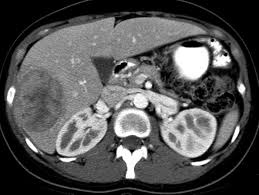
Introduction to Sarcoma Cancer
Sarcoma cancer, while less common than other cancers, remains a significant health concern, accounting for approximately 1% of all adult cancers. This group of cancers arises from connective tissues, such as muscle, fat, nerves, and bone. Understanding sarcoma cancer is crucial as early detection and innovative treatments can significantly improve patient outcomes.
Types of Sarcoma
There are two main categories of sarcoma cancer: soft tissue sarcomas and bone sarcomas. Soft tissue sarcomas can include liposarcoma (cancer of fat tissue), leiomyosarcoma (cancer of smooth muscle), and synovial sarcoma, among others. Bone sarcomas primarily refer to osteosarcoma, which typically occurs in the long bones.
Soft Tissue Sarcomas
Soft tissue sarcomas are generally more prevalent and can occur in the arms, legs, abdomen, or chest. Some notable types include:
- Liposarcoma: Originating in fat cells, it can be aggressive and often requires extensive treatment.
- Leimyosarcoma: This sarcoma arises from smooth muscle tissues and is often found in large blood vessels and the gastrointestinal tract.
- Synovial Sarcoma: Primarily affecting young adults, it typically arises near the joints.
Bone Sarcomas
Osteosarcoma is the most common type of bone sarcoma, frequently diagnosed in teenagers and young adults. It often develops in the knee area and can spread to other parts of the body if not treated promptly.
Symptoms to Watch For
Symptoms of sarcoma cancer often depend on the tumour’s size and location but may include:
- A noticeable mass or lump that is growing
- Pain in the affected area, particularly if the tumour is near bones or nerves
- Difficulties in movement or functioning
- Unexplained weight loss and fatigue in some cases
Treatment Options
Treatment for sarcoma cancer typically involves a multimodal approach. The main treatments include:
- Surgery: Often the primary method, focusing on removing the tumour and surrounding tissue.
- Chemotherapy: Commonly used for aggressive types of sarcoma, targeting cancer cells throughout the body.
- Radiation Therapy: Frequently used either pre-surgery to shrink tumours or post-surgery to eradicate any remaining cells.
Conclusion
Sarcoma cancer presents distinct challenges due to its rarity and variety of forms. Increased awareness and understanding of its types, symptoms, and treatment options are vital for early detection and successful management. Patients are encouraged to seek specialist advice if they experience concerning symptoms, as timely intervention can significantly improve survival rates. With ongoing research and developing therapies, the future holds the promise of more effective treatments for sarcoma cancer.
You may also like

Understanding Melatonin: Uses, Benefits, and Importance

Understanding the Importance of Bones for Our Health
